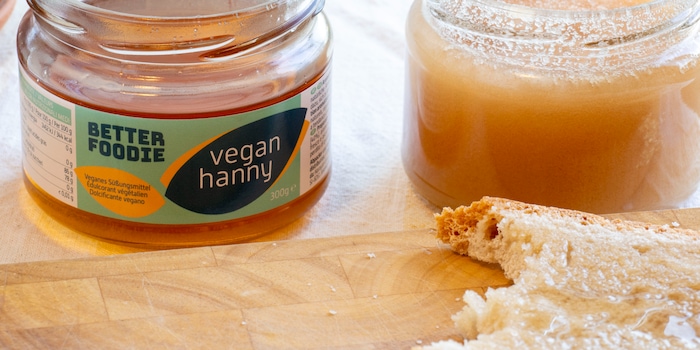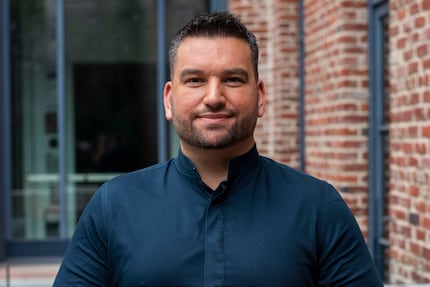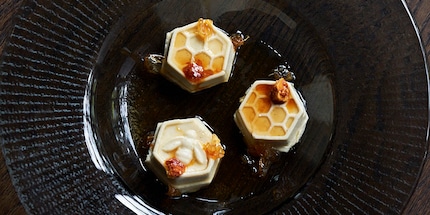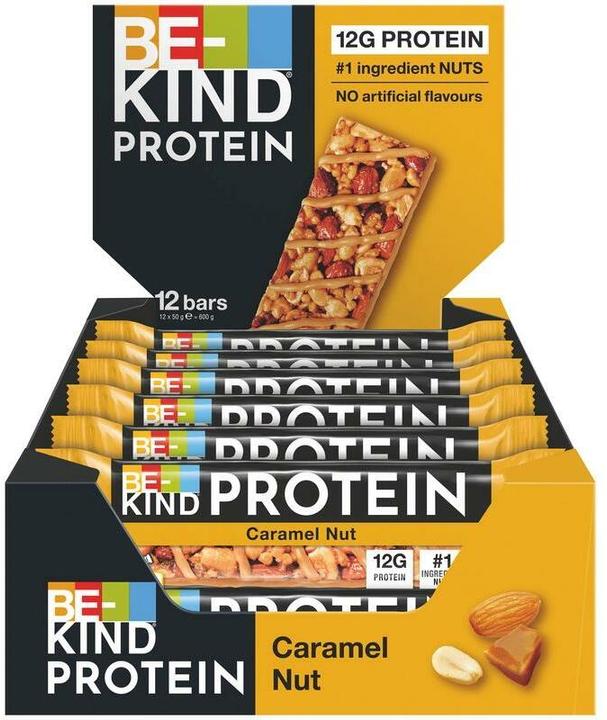
Background information
Is MSG bad for you? Not at all
by Simon Balissat

Darko Mandich has been looking into the negative effects of conventional honey production for quite some time. Now, he wants to give bees a breather. For this purpose, he’s developed bee-free honey.
Twelve years ago, the Swiss film More than Honey revealed how the honey industry’s struggling with major difficulties. Wild bees are dying in great numbers and large-scale businesses have no way of keeping their colonies in a species-appropriate manner.
In this interview, he gives an insight into the process, talks about adulterated honey and reveals which crazy honey combination is particularly popular in the USA.
Now I’m picturing loads of people standing in a field of flowers and scraping the pollen out of the blossom to make vegan honey.
Well, not quite (laughs). We’ve developed a new method in which we use the same plants as the bees. For this purpose, we work together with a large network of plant suppliers. We then extract the necessary ingredients for the honey from the plants. I’d say this gives us a 90 per cent molecular similarity to honey.
Am I right in thinking you use the whole plant?
Correct. The great thing about our method is that we use not only the pollen, but the entire plant. Even the root, depending on the plant. This makes us even more efficient than honey bees.
So you extract the sugar from the plant and make honey from it?
That’s right, but there’s more to it. Obviously, sugar is part of it, but other plant substances also play an important role. Let me give you an example. There are currently 300 different types of honey in the world, four of which we’ve been able to recreate. Our aim is to add many more of them.
Bees regurgitating honey is an important part of its production. How do you imitate that?
We’ll be applying this process to the second generation honey. At the moment, it’s still under development. The culinary honey that’s currently available belongs to our first generation.
Culinary honey?
Culinary honey’s added to food and drinks to sweeten them. It tends to be lighter and more liquid. For our second-generation honey, we want to recreate the processes that happen in a bee’s body. You could say that we’re trying to replicate a honey bee. We’re working on biologically producing certain enzymes that will become part of the composition of our future honey.
Where do these enzymes come from?
We use microorganisms that have always existed in nature. Our research team uses them to simulate the mechanisms that take place in a honeybee’s stomach. The microorganisms then release this enzyme into the honey. The whole process takes place in bioreactors.
Do you use local plants to make your European and American honey?
We’ve definitely taken the differences in taste into account. The honey in the US is based on clover honey that’s popular there, while the European honey was modelled on the Eastern European acacia honey made in late spring.
Are people in the US open to bee-free alternatives?
Less so than in Europe, but I’d say the US is catching up. I feel there’s a greater interest in trying out animal-free products in countries including Switzerland, the Netherlands, the United Kingdom and Germany. Perhaps because people in Europe are more willing to change their eating habits when they know what impact they’re having on the environment.
Is honey healthy? After all, it’s mainly made up of sugar.
I’m not going to deny that honey’s 80 per cent sugar. But in a world where we consume a lot of sweets, honey’s definitely one of the healthier options, in my opinion.
I get an immediate craving for sweets, depending on what it’s used on or in.
In the US, honey’s used in many foods, often combined with spicy flavours. That’s why the second product we launched over there was spicy honey. It’s used on pizzas and burgers. Crazy, right?
The Dutch company Fooditive’s currently working on a similar alternative to honey, but uses apple and peach residues. Find out more about it in an article written by my colleague and science editor Anna Sandner.
Painting the walls just before handing over the flat? Making your own kimchi? Soldering a broken raclette oven? There's nothing you can't do yourself. Well, perhaps sometimes, but I'll definitely give it a try.
Interesting facts about products, behind-the-scenes looks at manufacturers and deep-dives on interesting people.
Show allDarko Mandich experienced these challenges first-hand as an employee of a honey producer. This eventually made him give up his job and dedicate himself to helping the insects. One thing he’s certain of is that bees need a break. Together with Aaron M. Schaller, he founded the company MeliBio and developed a vegan honey that looks, smells and tastes like the original and is bee-free to produce.

You’re all about giving the bees a break. Why do they need one?
Conventional honey production comes with a lot of issues – both for the bees and the planet. One of the problems is that the European honey bee, Apis mellifera, is pretty much the only one used for production. Outside of Europe, this species can be invasive and drive other pollinators out. At the same time, there are over 20,000 native wild bee species worldwide that don’t produce honey, but have specialised in certain plants and highly efficient pollinators because of it. As a result, the mass introduction of European honey bees outside Europe is accelerating climate change. As the diversity of wild bee species declines, so does the diversity of plants. And these are necessary for absorbing CO₂.
Are there any other problems?
The production of honey is highly time-consuming and labour-intensive for both humans and animals. Anther problem is that the bees don’t get to choose where they nest, as they’re put into beehives. If a colony’s infected by a disease, it will quickly spread to neighbouring hives. What’s more, the European and American honey markets aren’t self-sustaining, which means they’re dependent on importing adulterated products. These fake honeys only contain very small amounts of honey and are heavily diluted with sugar syrup.
Are there ways to tell adulterated honey from real honey?
There are many myths about home remedies that allegedly expose fake honey. However, research has shown that these methods don’t work. Although lab tests are constantly being improved, the black market is always finding new ways to dodge these reports. It’s hard to be one hundred per cent certain if honey is real or not. But there are pointers you can look out for. If you buy expensive honey from a local apiary, it’s probably the real deal.
Your company makes vegan honey as an alternative. How is it produced without using bees?
Bees fly to different flowers and feed on nectar and pollen, which is broken down into fructose and glucose by enzymes in the bees’ stomachs. When they return to the hive, they regurgitate the honey. As soon as it’s settled in the hive and has matured, the beekeepers remove the frames from the hive and place them in a centrifuge to extract the honey. That’s how conventional honey is made.
I tried the first generation honey and was pleasantly surprised – it tastes very similar to genuine honey. Do you add anything to it or does your process do the trick?
The main reason why our honey tastes so authentic is that we’ve imitated the molecular structure of honey as closely as possible. Turns out that this was enough to create that natural taste. We’ve been working closely with chefs from the very beginning. Including Michelin-starred restaurant in New York. We considered it our beta test. Our honey’s still available from the restaurant today.


Be-Kind Protein Caramel Nut
Caramel, 12 pcs., 600 g